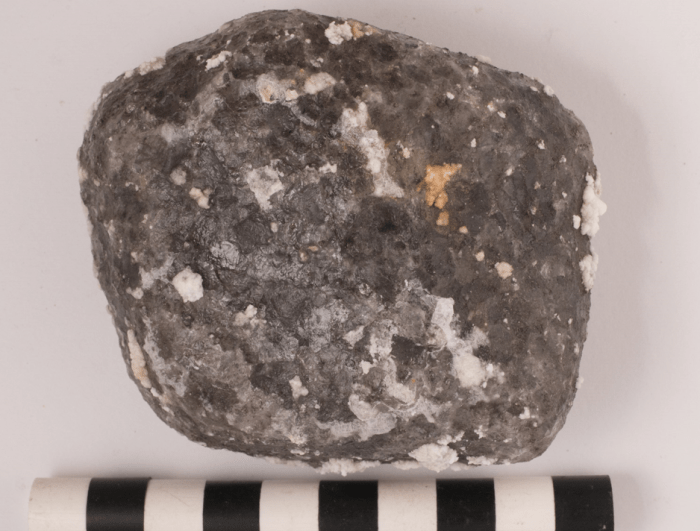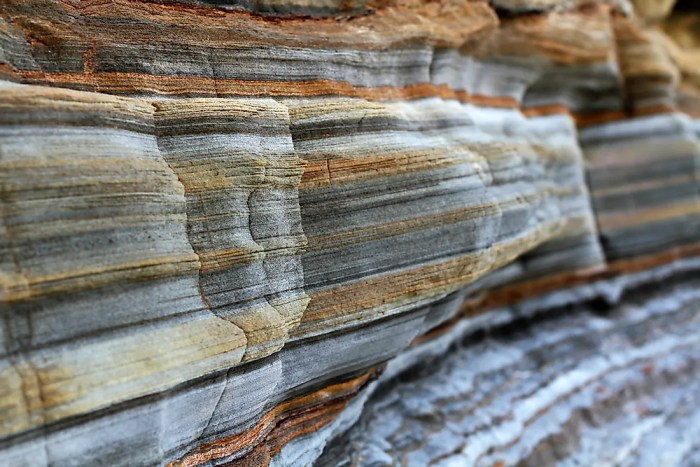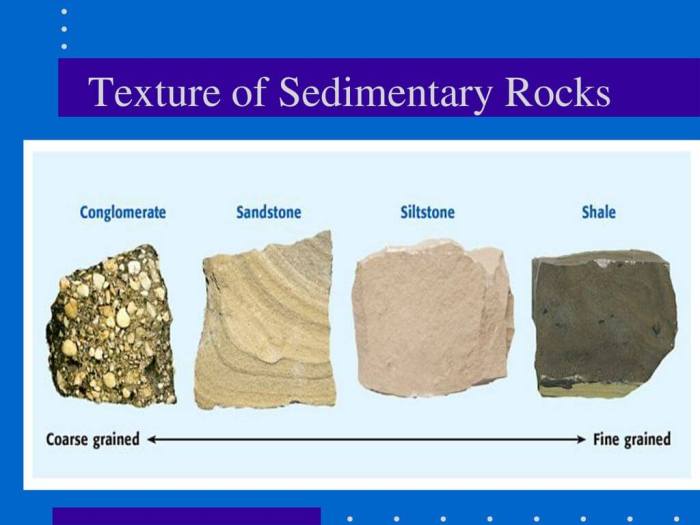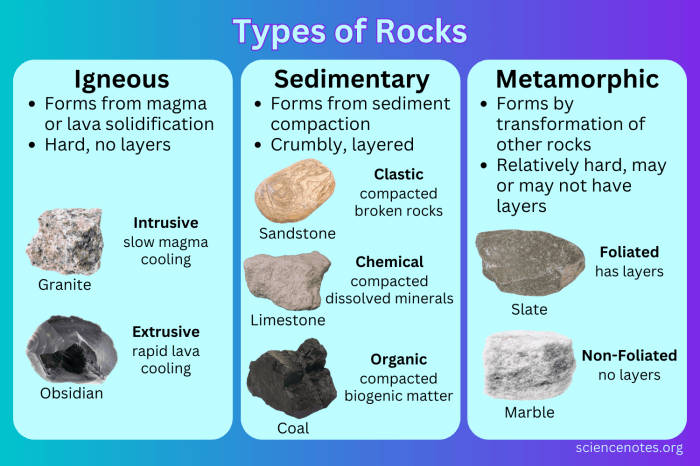What is the texture of inorganic land-derived sedimentary rocks – Delving into the realm of geology, we explore the fascinating world of inorganic land-derived sedimentary rocks, unraveling their unique textural characteristics. These rocks, formed from the accumulation and consolidation of mineral particles derived from the Earth’s crust, exhibit a captivating array of textures that hold clues to their geological history.
Inorganic land-derived sedimentary rocks encompass a wide spectrum of rock types, each possessing distinct textural attributes. From the coarse-grained conglomerates to the fine-grained shales, the texture of these rocks provides valuable insights into the processes that shaped them, the environments in which they were deposited, and the geological forces that have influenced their evolution.
Composition and Structure

Inorganic land-derived sedimentary rocks are composed primarily of mineral grains derived from the weathering and erosion of igneous and metamorphic rocks. These minerals include quartz, feldspar, and clay minerals. The texture and grain size of these rocks are influenced by the size, shape, and sorting of the mineral grains, as well as the degree of cementation and compaction.
The grain size of inorganic land-derived sedimentary rocks can range from fine-grained (less than 1/16 mm) to coarse-grained (greater than 2 mm). Fine-grained rocks, such as mudstones and shales, are composed of small, poorly sorted grains that are tightly packed together.
Coarse-grained rocks, such as conglomerates and breccias, are composed of larger, well-sorted grains that are loosely packed together.
The texture of inorganic land-derived sedimentary rocks is also influenced by the degree of cementation and compaction. Cementation occurs when minerals are precipitated between the grains of a rock, binding them together. Compaction occurs when the weight of overlying sediments compresses the rock, reducing the pore space between the grains.
Classification

Inorganic land-derived sedimentary rocks are classified into different types based on their texture. The following table presents a classification system for these rocks:
| Rock Type | Texture | Key Characteristics |
|---|---|---|
| Conglomerate | Clastic | Composed of rounded or angular pebbles or cobbles |
| Breccia | Clastic | Composed of angular fragments of rock |
| Sandstone | Clastic | Composed of sand-sized grains |
| Siltstone | Clastic | Composed of silt-sized grains |
| Mudstone | Clastic | Composed of clay-sized grains |
| Limestone | Chemical | Composed primarily of calcite or dolomite |
| Dolostone | Chemical | Composed primarily of dolomite |
| Chert | Chemical | Composed primarily of silica |
Depositional Environments

Inorganic land-derived sedimentary rocks form in a variety of depositional environments, including deserts, rivers, lakes, and oceans. The texture of these rocks is influenced by the depositional processes that occur in each environment.
In deserts, wind-blown sediments are deposited in dunes and other landforms. These sediments are typically well-sorted and rounded, resulting in fine-grained sandstones and siltstones.
In rivers, sediments are transported by flowing water. The texture of river-deposited sediments depends on the velocity of the water. Fast-flowing rivers deposit coarse-grained sediments, such as conglomerates and breccias, while slow-flowing rivers deposit fine-grained sediments, such as mudstones and shales.
In lakes, sediments are deposited from suspension in the water. These sediments are typically fine-grained and well-sorted, resulting in mudstones and shales.
Geological Significance

Inorganic land-derived sedimentary rocks are important for understanding past climates, tectonic events, and paleoenvironmental conditions. These rocks can provide information about the composition of the Earth’s crust, the movement of tectonic plates, and the evolution of life.
For example, the study of ancient desert sandstones can provide information about past climate conditions. The presence of fossils in sedimentary rocks can provide information about the evolution of life. And the study of sedimentary rocks in mountain belts can provide information about the movement of tectonic plates.
FAQ Corner: What Is The Texture Of Inorganic Land-derived Sedimentary Rocks
What factors influence the texture of inorganic land-derived sedimentary rocks?
The texture of inorganic land-derived sedimentary rocks is primarily influenced by the size, shape, and arrangement of mineral particles, as well as the degree of cementation and compaction.
How can the texture of sedimentary rocks provide insights into past environments?
The texture of sedimentary rocks can provide clues about the depositional environment in which they were formed, such as the energy level of the water or the presence of wind or ice.
What are some common textural features observed in inorganic land-derived sedimentary rocks?
Common textural features include grain size, sorting, roundness, and the presence of sedimentary structures such as cross-bedding or ripple marks.